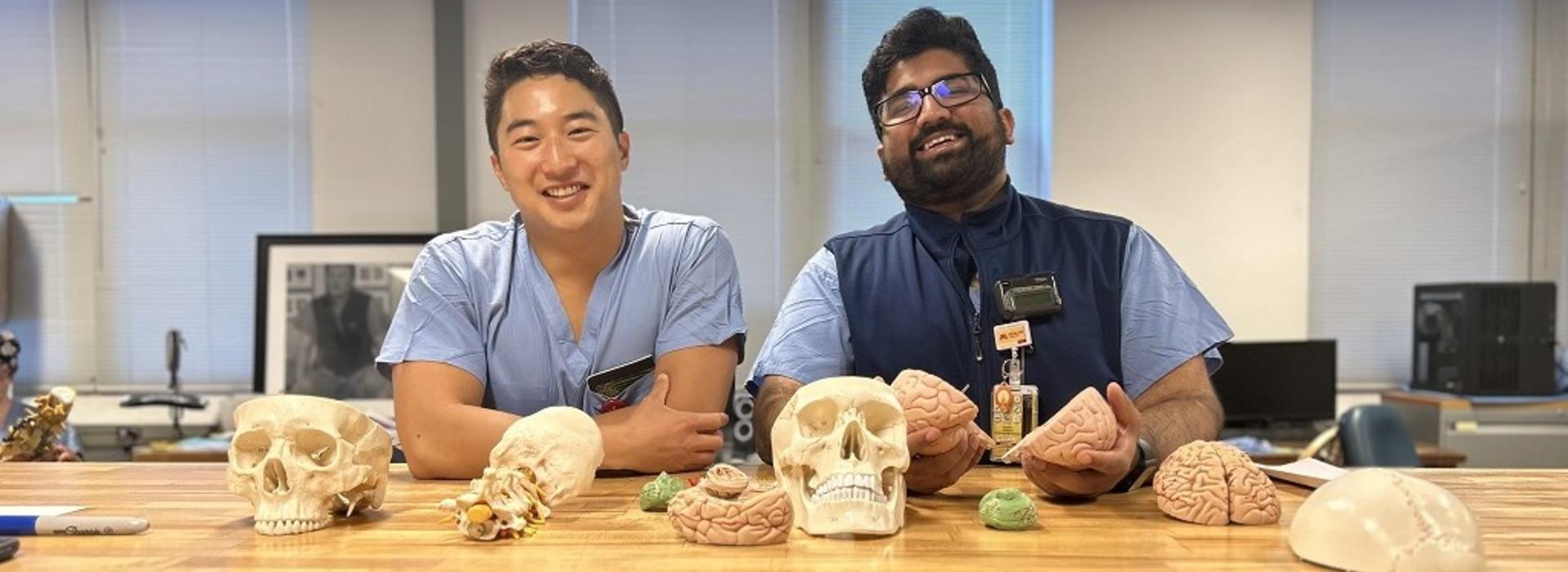
Department welcomes PGY1 residents
Two new residents began their seven-year journey with the Department on July 1, 2023. Both bring unique perspectives and extensive experience to their residency.
James Baek, MD, PhD
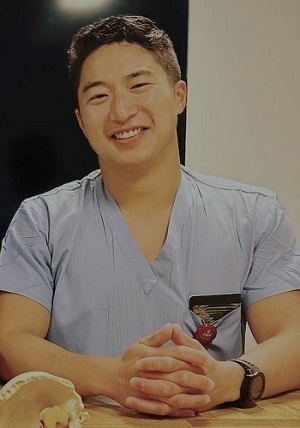
Baek earned his MD and PhD at the Indiana University School of Medicine (IUSM) in Indianapolis and his undergraduate degree in biology from Washington University in St. Louis, MO. His interest in neurosurgery was inspired in high school by a deep brain stimulation procedure. “I watched the patient struggle to sign the consent form before the procedure,” he said. “That afternoon, I saw that he was eating soup without needing any help. He began crying and said it was the first time he could do that in 15 years. It was amazing to see that such disabling brain pathology could be managed in a day and have such a huge impact on the patient’s life.”
The maturity of the U of M’s neurosurgery program attracted Baek. “I could identify people that I thought could be fantastic mentors,” he said. “A lot of my PhD research was most relevant to functional neurosurgery and the U of M has a lot of expertise in that area. I also know there is a vibrant neuroscience department here that does a lot of great translational work.”
Baek built his investigatory skills during his PhD program in Indianapolis studying the role of neuroinflammation in methamphetamine addiction. “What drew me to neuroscience is the connection between the brain and behavior,” he said. “Neurosurgery is one of the only specialties that enables you to get the ground truth about different diseases.” His research work enabled him to publish a first author paper on a potential new treatment for addiction and make several oral and poster presentations during scientific meetings throughout the United States.
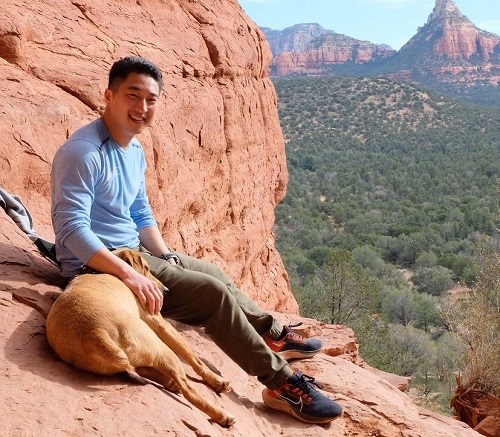
Baek isn’t afraid of the challenges he will face over the next seven years. “It will be going from a position where I felt like I knew things to being a learner again,” he said. “That’s a life transition I’m happy to make.” He’s used to taking on challenges, having been part of the Nike Pace Team for the Chicago Marathon, helping create the Indiana University medical student chapter of the American Association of Neurological Surgeons, and co-founding the IUSM Surgery Student Interest Group Cluster.
Because Baek’s parents came from Korea, he feels that as a resident, he benefits from being part of two worlds. “I grew up thinking a lot about other people’s perspectives. I would not have made it this far without my family, which is also something I think about when I approach my patients,” he said. “Every patient is someone’s family.”
When he has some spare time, Baek and his dog Rusty do a lot of trail running. “It’s how I like to unwind,” he said. “I also like to cook, mostly what I grew up eating, sometimes mixing in other flavors that I loved.” In addition, he enjoys rock climbing, woodworking, and exploring the local food scene.
Anant Naik, MD
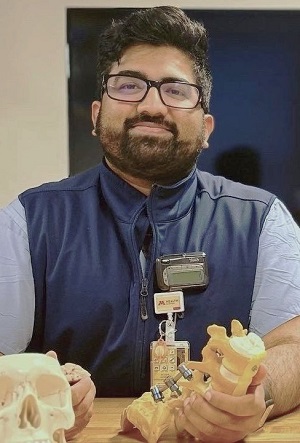
Naik earned his MD from the Carle Illinois College of Medicine in Champaign and his undergraduate degree in electrical engineering from the U of M. “My dad is an electrical engineer so I grew up around a lot of electronics and the idea of becoming an electrician for the body resonated with me,” he said. “When I got to medical school, I was excited by the notion of the brain’s circuitry and using electrodes to stimulate certain responses.”
The U is a special place to Naik. “When I was in high school, I started doing diabetes-related stem cell research in the Lion’s Research Building,” he said. “During my undergraduate years, I was very involved when I was on campus, serving as an editor of The Minnesota Daily and working with Engineers Without Borders.” Another motivating factor for Naik’s choosing the U’s neurosurgery residency program is that his family lives in the Twin Cities.
While he is a resident, Naik’s biggest priority is to learn how to do really good neurosurgery. “There is so much to know and it’s so difficult to get good at it,” he said. “I’m looking forward to spending as many hours as I can perfecting my craft.”
Naik is also looking forward to engaging in research. “With an engineering background, I’m interested in device development and building technology that bridges gaps in accessibility,” he said. “I want to help build inexpensive systems to solve complex problems in low-resource environments like sub-Saharan Africa that still achieve great outcomes for patients.”
While in medical school, Naik worked with ATLAS Bedside Stereotactics in Champaign and helped design a low-cost passive stereotactic system that could register CT scans of a patient's head at the bedside and place ventriculostomies — neurosurgical procedures performed in low-resource settings that involve creating a hole within a cerebral ventricle for drainage. “Our device and registration algorithm is under development, and has completed a round of cadaveric studies,” he said. “We plan to construct a nonprofit around the device to market and distribute the technology.”
In addition to continuing the work he started in medical school, Naik is interested in doing new research while at the U. “One of the topics I’m interested in now is how to use augmented reality and low-cost robotics for neurosurgery,” he said. “These days, everyone has a cell phone, which gives you a platform for augmented reality, whether it’s using the phone to place an EVD [external ventricular drain] or building a low-cost robotic system like the one I worked on at the University of Illinois. It blends my engineering background and my interest in neurosurgery.”
Thanks to the research he’s done so far, Naik has published numerous journal articles and has made poster and oral presentations during medical meetings throughout the world.
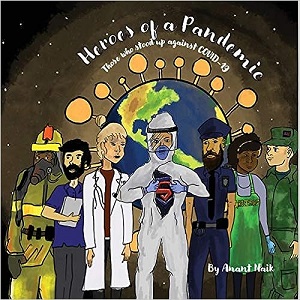
During the pandemic, Naik developed an unusual project – he wrote, illustrated, and published a children’s book titled, Heroes of a Pandemic: Those Who Stood Up Against COVID-19. Aimed at raising funds for Engineers Without Borders, the book looked at the pandemic through a child’s lens. “A lot of kids didn’t really understand why they had to stay inside and wear a mask,” said Naik. “In the book, I portrayed essential workers as heroes because they didn’t have the luxury of staying safe.” He is working on other books that use art and poetry to make the medical experience for kids “more friendly.”
When Naik has the time, he loves to cook, although he acknowledges that it’s tough to do that during residency. “My mom taught us how to cook good Indian meals and I want to make time to do that,” he said.



